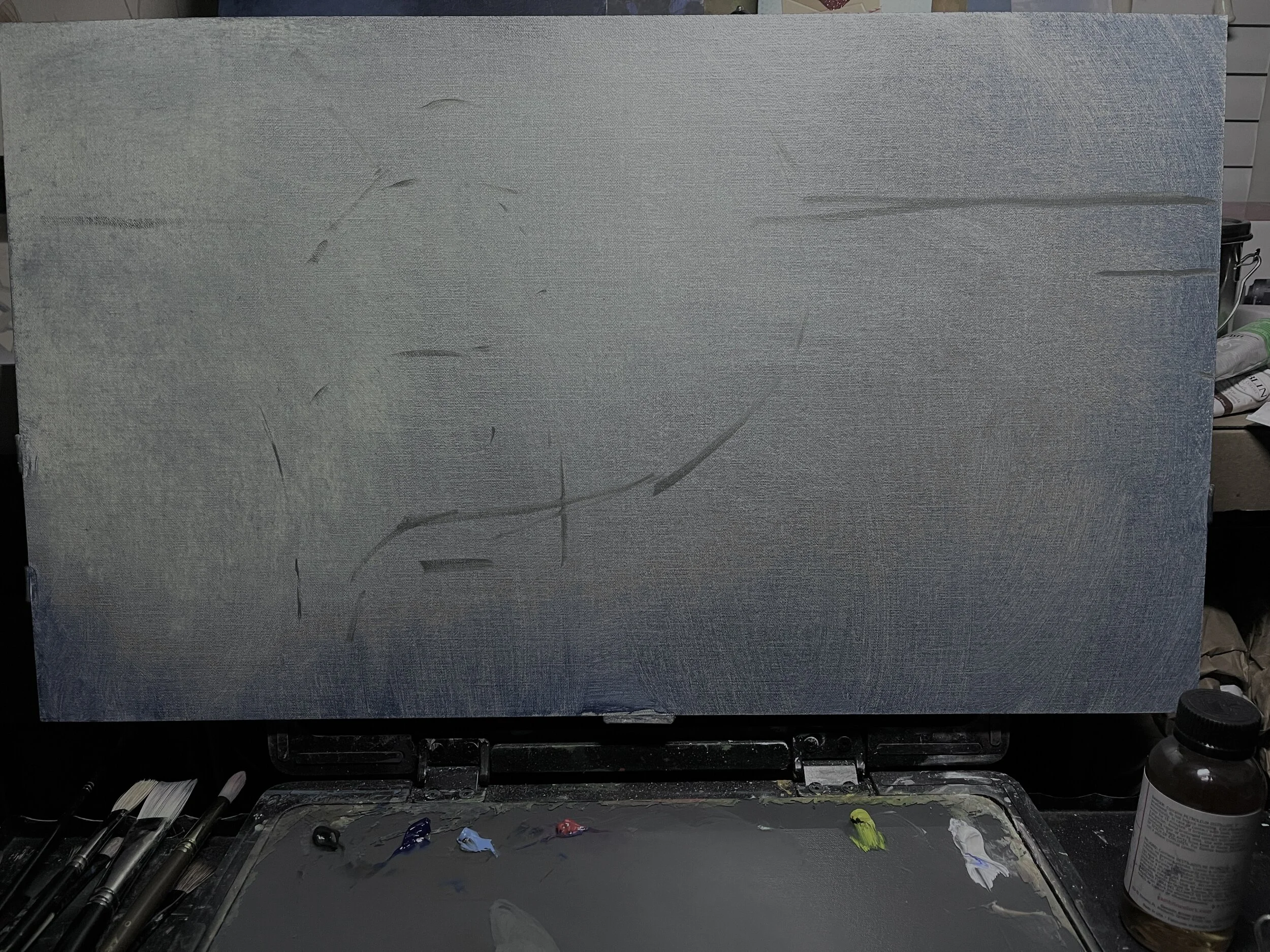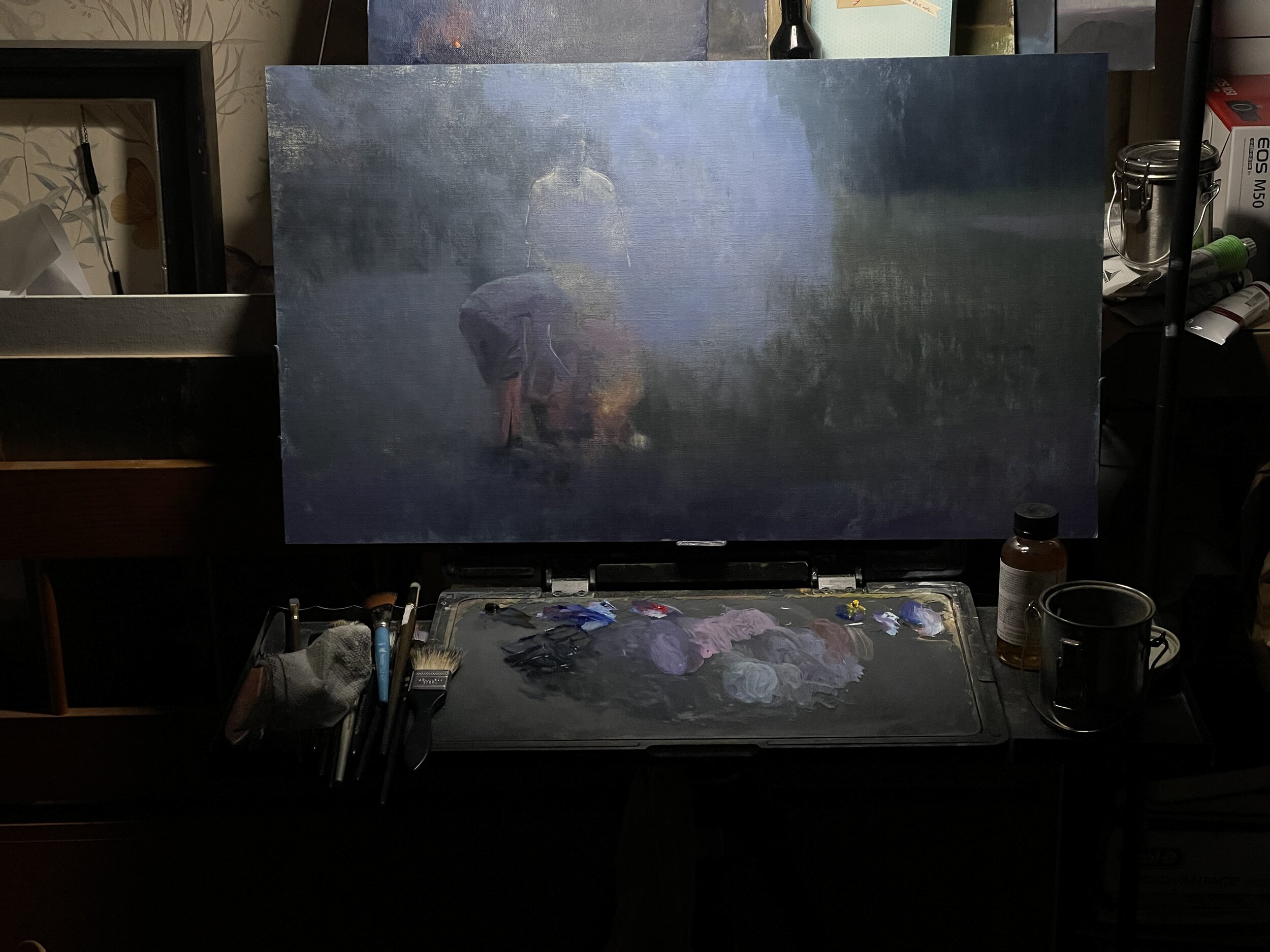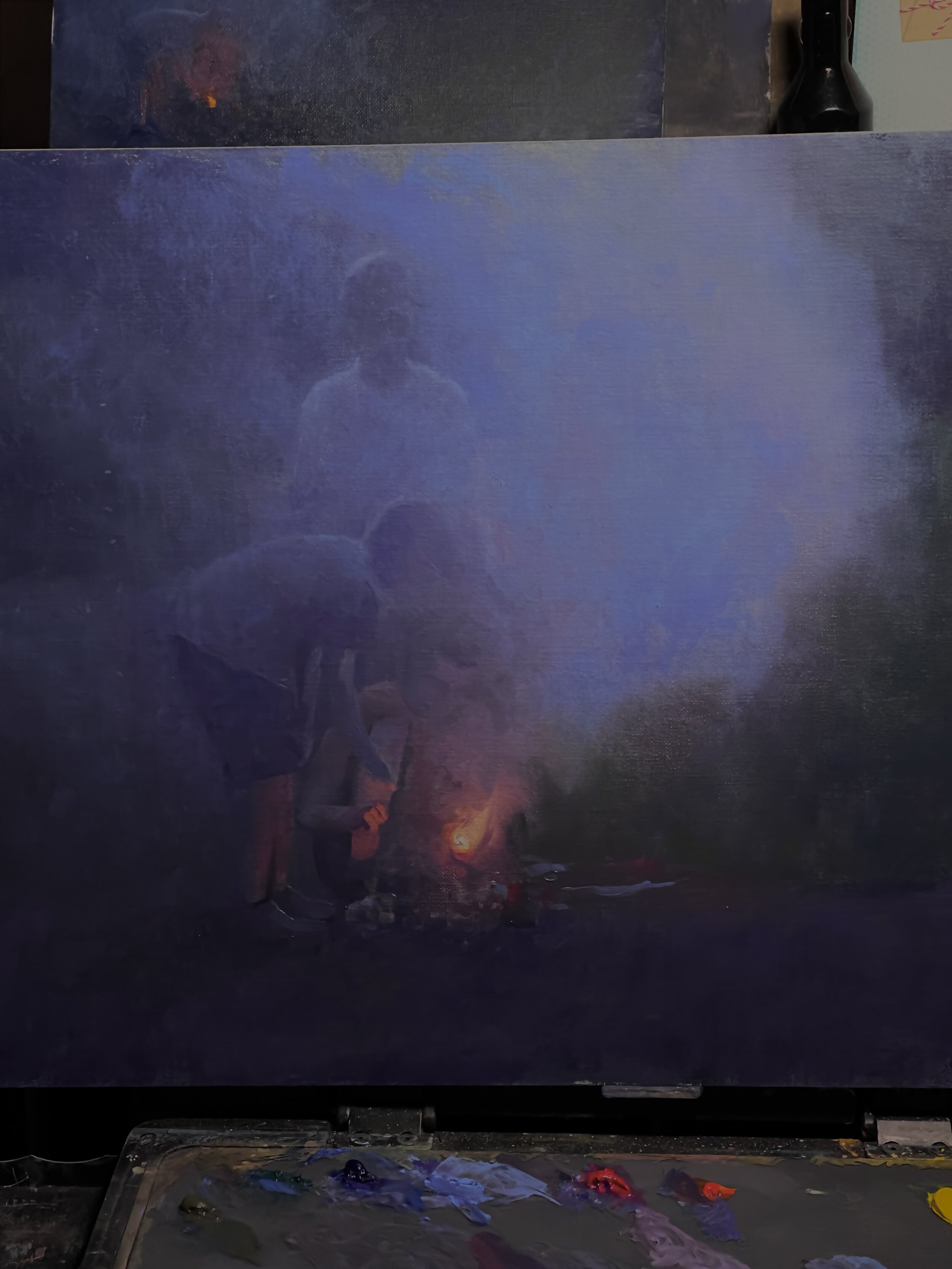Each Like Smoke
I love looking at fire and smoke. I grew up walking into my father’s mother’s house and being met with a wood stove. We’d get the old glove, open the creaky iron door and shove in a few pieces of wood. Inside was a shimmering world where fire moved like water lapping, like liquid bees, language made manifest. In the winter at my aunt and uncle’s house, you’d pull on the aluminum storm door that never really latched and take a step up into a little linoleum-floored room where the stove was. To the right was a pile of Carhartt coveralls, overalls, and coats with an assortment of boots kicked off at the bottom. To the left was the stove with a pot of water on top. You have to keep a pot of water on the stove to humidify the air. Fire gives and takes.
The fire and its hypnotic warmth was only half of the reward. Woodsmoke, for me, is one of those things (along with Black Walnuts) that - through scent alone - can transport me immediately back to my youth. Some of the smell would fill the house, of course, but there is something deeply meaningful, deeply human, to see smoke rising from a chimney as you approach. It’s like an antenna or some sort of transmission device, a signal, a hand waving you in. To see a homefire or campfire and its smoke rising is - I can’t encapsulate it. A little fire made with intention is like a truce. Sitting at one is being in the presence of a mediator.
(Likewise, there is a heaviness in a cold stove.)
Imagine being able to hold and shape smoke and flames as one does clay. I imagine some future innovation where we can do just that, but as for the present I have to be satisfied with making oil paint seem alive the same way fire and smoke move and have form like living things. I can’t do that, but with the painting “Independence Day” I got as close as I ever have. The effect of a just-lit fuse was captured well enough to be interesting and moderately convincing. I’m happy with it.
I HAD A PLAN (sort of)!
I began by seeing flat shapes - the smoke occupied territory and the clear. I was happy with the resulting forms, so I didn’t deviate too much from them.
If the initial division of space isn’t interesting or helpful, it is best to just stop, re-place lines and marks, and repeat until I can look at just the stain and first marks and be happy. If I’m too casual or lazy or thoughtless at the beginning, the rest will not be pleasant. There will be a sub-surface nagging all the way through the process that simply wants the first things put down to be simple and good. If they are not - nag, nag, nag…
Here is the initial division of space:
The initial division of space.
Actually, What I saw was this without the horizontal line at the top. One big curve. That’s it!
Next: Flame and Curve 2
This image would have worked fine with the kids and flame moved over to the right - more centered - but, what the heck. This is what I chose because I wanted more empty space (“empty”). I liked the idea of feeling twilight, and my in my experience, twilight is most obvious on the darkening, blue-dewy, grass. (And that space gave me room to place another curve - one that continues off the edge and is (hopefully) completed by the viewer. See it?
Also note my ragged grid along the top and sides. This was crucial to keeping my proportions close enough for government work.
THE KEY
See that smoke? I chose to use a premixed color as the body and key everything else off of it. I used Bice from Vasari. It worked like a charm. Good saturation and temperature for this painting.
I actually wished that I could leave the back figure undone like he is here. It seemed to say something that I liked, but I had to remember my purpose, and that kind of thing did not align with it. Do not think that I will forget the look of it with those simple, clear marks marking the outside of his arms together with the thin, scrubby look opposed to color. I see you, surface. I see you.
Smoke: Temperature and Thickness
This is an attempt to show the dimensions of the smoke, but you really can’t get it. You can see that there are temperature variations that are good, but the play of temperature and thickness really makes a difference. Parts are raw panel scrubbed and scraped away (see lower right, up and to the right of the flame).
Generally, the warm pinks and oranges are thin and the central blue is thick.
The mark that looks like the rear figure’s brow line is a simple scrape followed by a dark mark for the eye area. Actually, that pretty much describes his entire head.
As I progressed, I would step back and look for questions and listen for answers. For example, recently I had seen that the legs and arms on the front boy were flat because I had laid in just light and dark without subtle shifts (these are pretty small areas, but I still needed to address it because it caught my eye). In order for the leg to be round, it had to soften coming out of shadow, soften as it transitions into shadow, and then disappear - all while seeming lit from the flame.
I had a feeling that the purple section (driveway) seemed flat, but the picture isn’t about it, so I had to think of how to make it more present (interesting) without it being noticed. I decided that somewhat thicker color patted on with a knife would give me surface interest with the added bonus of creating tiny ridges that will catch light from the top - just like it was in real life. So that’s what I did. I mixed the same or similar colors, applied them a bit thicker, patted and scraped with the knife, and left it alone. As I type this (Jan. 4 before leaving for work), it seems better to me, if not good. (UPDATE: it turned out fine :))
Eventually, I would make subtle lines and dots that act to my view as a bank acts to a creek. I won’t point them all out, but it’s something that I like doing.
This has gone on long enough, I think, so I’ll leave you here. At bottom is the image submitted to the Oil Painters of America in the hope of getting in to the National show. A long shot, for sure, but here I have made an image that is of me - that is to say, authentic - while knowing that it has elements that someone else may enjoy as well. In the end, this image of my nephews lighting fireworks on their own for the first time is very specific: my way of applying paint, my relative’s land, my nephews, Tennessee, summer, twilight —
but in another way, isn’t it all of us? Breaking away, living, burning, then passing? Perhaps not. To me it is a prayer, because it is filled with things that remind me of how we are all in a river of time, passing by one another, helpless to change the body’s end, yet this thing, this artifact stops the current in its own small way. So it is with prayer. So it is with acts of goodness. They may not seem to lessen the great current of time’s passing, we may have eyes rolled at us, and we may hear that they don’t matter, but they do, don’t they? No matter what, they do matter. Such acts of defiance (for who has ever drawn a sword on and defeated Time?) - such efforts - painting, listening to others, giving someone money, visiting the sick, walking with the elderly, praying - show the river of time that, no matter how quickly its currents push us, we will continue to tread
and
show the smoke that,
no matter how quickly the winds dissipate us, we will continue to burn.
Such acts draw swords on despair and ugliness. Such acts are small lights for those who look back on us and our time and encourage hope, faith, and love. We are not made of stardust. The stars were made for us. That kind of thinking will get you shunned today, but the double speak and confusion must be met with the mystery of Beauty. The small acts mentioned above are nothing if they are not echos of the Beautiful Mystery. Audry Assad sings of “little things with great love.” Despite the gloomy feeling we may have from being reminded of how short our lives are, these little acts, though unknown by most, are still acts of war against despair and confusion. When we see our inevitable end AND STILL GO FORTH WITH GLADNESS, Melancholy meets its match.
This is a painting about youth. This is a painting about life. This is a painting about growth. This is a painting about death. This is a painting about twilight. This is a painting about smoke. This is a painting about family. This is a painting about painting. This is a painting about freedom. This is a painting about goodness. This is a painting about light. This is a painting about me. This is a painting about us. This is a painting about dreams. This is a painting about prayer.
Independence Day



